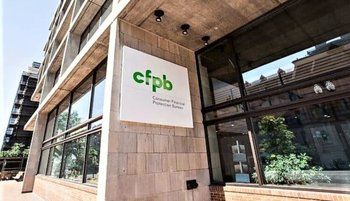In the wake of the housing bust, few lenders have had much appetite for risk, offering primarily "plain vanilla" mortgages to highly qualified borrowers. However, Keith Gumbinger, vice president of HSH.com, says that now, though, there's a "huge cohort of wannabe borrowers that lenders will have to look at in order to grow their business."
Sam Garcia, founder and publisher of Mortgage Daily in Dallas, agrees, saying now that refinancing has slowed, lenders will need to be less conservative in order to generate more business.
That doesn't suggest that yesterday's "liar loans" will return to the market, says Gumbinger, but some mortgage programs -- such as interest-only loans -- will become more available but with more restrictions in place to minimize risk.
"Those mortgage loans were niche products to begin with and were intended for 2 percent of the market," says Gumbinger. "Unfortunately they were marketed to 20 percent of the market and that's when the problems started."
Garcia says that before the explosion in mortgage credit that fostered the last housing boom, subprime loans used to require down payments of 5 to 20 percent depending on the borrower's credit and had higher interest rates.
"The problem was that risk-layering exploded, with down payments dropping to zero for borrowers who had bad credit and couldn't necessarily verify income," says Garcia.
Risk layering included all manner of combinations of low credit scores, low- or no-down payment, little or no income and asset verification, high debt-to-income limits and more. These were often added onto already-risky products, including mortgages that had frequent interest rate resets, allowed for negative amortization, had punitive anti-refinancing clauses and other characteristics.
Return of subprime lending
Gumbinger says that it took years for lenders to get past the bad loans of yesterday, manage troubled homeowners and become comfortable with the new rules of the mortgage market. With plenty of refinance and purchase mortgage borrowers to serve, lenders really haven't needed to look outside the normal lending "box". But things have begun to change.
"It won't be unfettered and there will be restrictions, but frankly, subprime lending will have to come back," he says.
More lenders are starting to dabble in the non-qualified mortgage (non-QM) space, but this segment is still dominated by jumbo mortgages, interest-only mortgages, alternative income documentation (Alt-doc, sometimes called Alt-A) and other such features that fall outside the definition of a QM. However, these are still largely made to borrowers with strong risk offsets, such as a high credit score.
"We've not yet seen borrowers with very low credit scores -- the classic definition of "sub-prime" -- get much by way of access to credit yet," adds Gumbinger. Even the FHA program (which allows for borrowers with credit scores as low as 500) remains difficult to access for borrowers with scores much below 620, but lender "overlays" -- underwriting restrictions beyond what HUD requires -- are slowly receding.
Garcia says true subprime lending will come back in a form with more accountability than in the past, but Steve Cohen, vice president and loan originator with First Place Bank in Rockville, Md., believes that the subprime market is gone forever.
"We've backed away from the idea that everyone can buy a house," says Cohen. "The idea is not to let people decide what's affordable, but to let banks decide."
Disappearing mortgage products?
Here are five mortgage products which largely disappeared after the downturn. Some are gone for good but others have resurfaced.
No. 1: Option ARMs
"The only loan product that disappeared entirely and isn't likely to come back is the Option ARM," says Gumbinger. "It was intended for an environment with rising home prices to ameliorate the risk and it was initially meant for people who had a good handle on their finances. The problem was they gave too much flexibility to too many borrowers."
No. 2: Interest-only loans
Garcia says interest-only loans aren't considered a QM, which means they're likely to have numerous restrictions and will require a large down payment, but he believes they'll become more widely available.
Gumbinger says some interest-only loans are available now, especially for jumbo loans, but only for borrowers with a strong balance sheet and proof of substantial future income.
"They're not necessarily risky if you can manage the payments when they rise," he says. "Since many of these are hybrid ARMs, it's also easy to run any number of scenarios to see what will happen to payments when both the interest-only and fixed-rate period ends. By doing so, you can know the risks before you actually take the loan."
No. 3: Balloon-payment loans
While rare today, loans with balloon payments may be reintroduced at some point, Cohen says, particularly for second loans that are amortized over 30 years but require a balloon payment after 15 years.
No. 4: No/low-documentation loans
Gumbinger says loans with limited documentation are coming back to give flexibility to some self-employed individuals, but they require a bigger down payment and excellent credit.
An alternative to no-documentation loans for high-net-worth individuals is a loan based on their proven assets rather than an income stream.
"Asset-based loans need to come back for people who have excellent credit and extremely high levels of assets but don't show enough income for a traditional loan," says Cohen.
No. 5: Zero-down-payment loans
Some mortgage lenders have already brought back 100 percent financing, but this time the borrowers must have good credit and verified income to prove they can afford the payments, says Garcia. These loans typically require mortgage insurance and/or a higher interest rate to compensate for the added risk to the lender. In addition, VA- and USDA-backed "rural" mortgages also don't require a downpayment.
"Mortgage lending has already contracted so much that it needs to expand over time," says Garcia. "But even if some of these loan products come back, the CFPB rules will prevent lenders from allowing loans to be as risky as they were in the past. They'll have to verify income and have to check credit, and subprime loans will require at least 20 percent down."
Keith Gumbinger revised this article.



